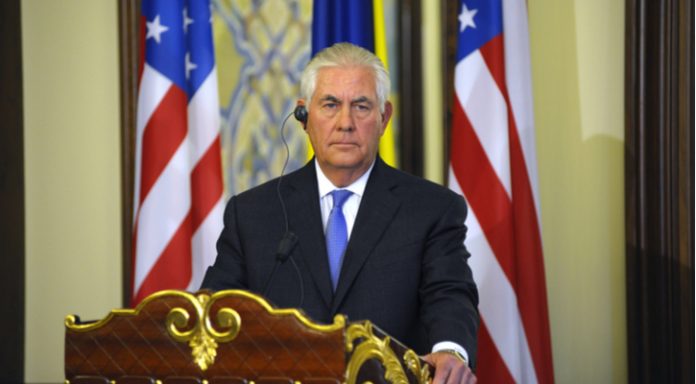Trump ousting Secretary of State Rex Tillerson sent the dollar sharply lower on Tuesday. The pound US dollar exchange rate jumped to just shy of $1.40, before it eased back slightly towards the close. This pound US dollar exchange rate last traded at these levels two weeks ago, at the end of February.
| What do these figures mean? |
|---|
|
When measuring the value of a pair of currencies, one set equals 1 unit and the other shows the current equivalent. As the market moves, the amount will vary from minute to minute. For example, it could be written: 1 GBP = 1.28934 USD Here, £1 is equivalent to approximately $1.29. This specifically measures the pound’s worth against the dollar. If the US dollar amount increases in this pairing, it’s positive for the pound. Or, if you were looking at it the other way around: 1 USD = 0.77786 GBP In this example, $1 is equivalent to approximately £0.78. This measures the US dollar’s worth versus the British pound. If the sterling number gets larger, it’s good news for the dollar. |
The UK Chancellor’s Spring Statement was the central focus for pound traders in the previous session. As there were no spending announcements or tax adjustments, the Statement was relatively bland. There were a few promising points, such as the Office of Budget Responsibility raising economic growth forecasts this year to 1.5% from 1.4%. Furthermore, the government deficit fell to £45 billion, down to 2.2% of GDP in 2017-18, and forecast to be just 1.8% of GDP in 2018-19. The stronger than forecast data boosted demand for the pound.
| Why does strong economic data boost a country’s currency? |
|---|
| Solid economic indicators point to a strong economy. Strong economies have strong currencies because institutions look to invest in countries where growth prospects are high. These institutions require local currency to invest in the country, thus increasing demand and pushing up the money’s worth. So, when a country or region has good economic news, the value of the currency tends to rise. |
There was also a significant amount of not so good news for the UK economy. Economic growth forecasts for 2019 and 2020 remained constant at 1.3% whilst forecsts for 2021 and 2022 were downgraded. This means that the UK faces years of weak economic growth, which could be worse still given Brexit uncertainties.
Today there are no influential UK economic releases, meaning that, in the absence of Brexit headlines, US factors are likely to drive the pound US dollar exchange rate.
Dollar Moves Lower As Tillerson Heads For The Door
The dollar was initially supported in the previous session by inflation data. The CPI figures showed that inflation moved slightly higher in February at 2.2%, up from 2.1% in the previous month. However shortly after the release, the dollar sunk lower as investors became unnerved by another ousting in the White House.
President Trump has removed Rex Tillerson, Secretary of State and replaced him with CIA Director Mike Pompeo. The markets have long considered Tillerson a voice of reason within the White House. His exit is therefore concerning the markets, as investors believe that more protectionist policies and more aggressive behaviour from Trump regarding trade policy could be on the cards.
| How does political risk have impact on a currency? |
|---|
| Political risk drags on the confidence of consumers and businesses alike, which means both corporations and regular households are then less inclined to spend money. The drop in spending, in turn, slows the economy. Foreign investors prefer to invest their money in politically stable countries as well as those with strong economies. Signs that a country is politically or economically less stable will result in foreign investors pulling their money out of the country. This means selling out of the local currency, which then increases its supply and, in turn, devalues the money. |
Today investors will turn their attention once more to economic data, this time in the form of retail sales. Any signs that US consumers are spending less could send the dollar lower.
|
This article was initially published on TransferWise.com from the same author. The content at Currency Live is the sole opinion of the authors and in no way reflects the views of TransferWise Inc. |





